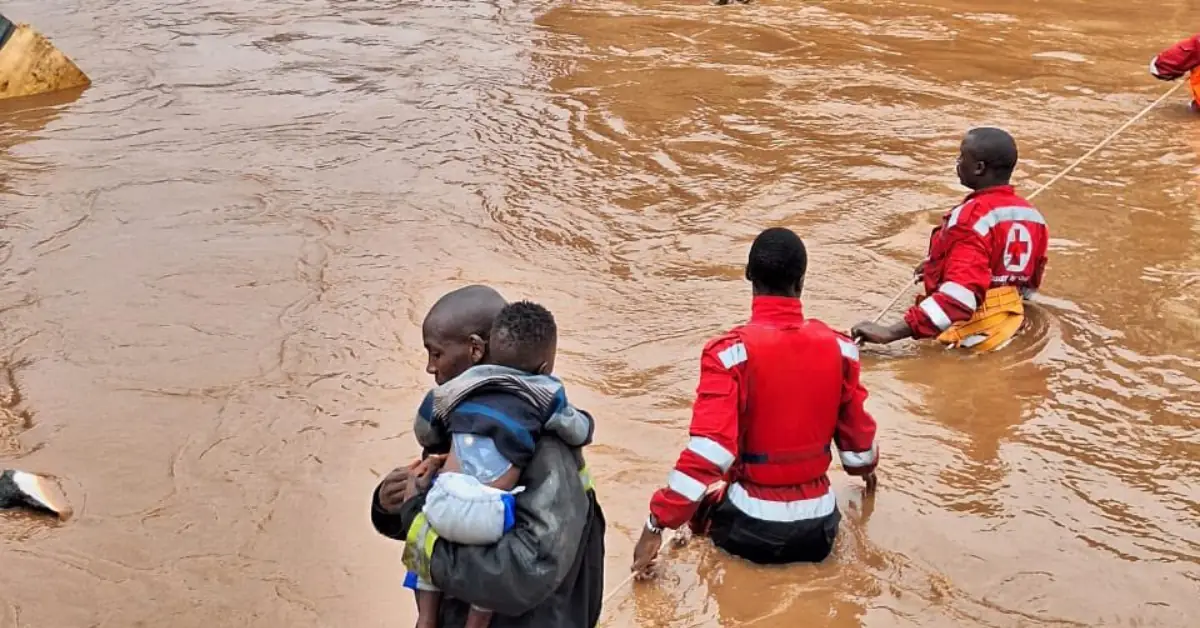
Kenya nairobi flooding – Nairobi, Kenya’s bustling capital, has been grappling with a severe flooding crisis that has wreaked havoc on its communities and infrastructure. This article delves into the causes, impacts, and mitigation strategies surrounding Nairobi’s flooding, providing a comprehensive understanding of this pressing issue.
The torrential rains and poor drainage systems have turned Nairobi’s streets into raging rivers, submerging homes, businesses, and roads, causing widespread devastation and displacement.
Causes of Flooding in Nairobi

Flooding is a major problem in Nairobi, Kenya. The city experiences frequent heavy rains, which can lead to flooding in low-lying areas. In addition, the city’s drainage system is inadequate, which exacerbates the problem.
Urbanization and Poor Drainage Systems
One of the main causes of flooding in Nairobi is urbanization. As the city’s population has grown, so too has the amount of impervious surfaces, such as roads and buildings. These surfaces prevent water from infiltrating into the ground, which leads to runoff and flooding.
In addition, the city’s drainage system is inadequate to handle the volume of runoff that is generated during heavy rains.
Climate Change and Extreme Weather Events
Climate change is also contributing to flooding in Nairobi. The city is experiencing more frequent and intense rainfall events, which can overwhelm the city’s drainage system. In addition, climate change is leading to a rise in sea levels, which is increasing the risk of flooding in coastal areas.
Impact of Flooding on Nairobi
Flooding can have a devastating impact on Nairobi. The city’s infrastructure is often damaged by floods, and the city’s economy is disrupted. In addition, flooding can lead to the spread of waterborne diseases, such as cholera and typhoid.
Immediate Consequences
- Loss of life
- Property damage
- Infrastructure disruption
Long-Term Effects
- Health problems
- Loss of livelihoods
- Damage to the local economy
Psychological and Social Impacts
Flooding can also have a significant psychological and social impact on Nairobi’s communities. People who have been displaced by flooding may experience anxiety, depression, and post-traumatic stress disorder. In addition, flooding can disrupt social networks and community cohesion.
Government and Community Response to Flooding
The government of Kenya has taken a number of steps to address flooding in Nairobi. These steps include investing in infrastructure, such as drainage systems and flood walls, and implementing flood warning systems. In addition, the government has worked with community organizations to develop flood preparedness and response plans.
Government Initiatives and Policies
- Investing in infrastructure
- Implementing flood warning systems
- Working with community organizations
Role of Community Organizations and Individuals, Kenya nairobi flooding
- Developing flood preparedness and response plans
- Educating the public about flooding
- Providing assistance to flood victims
Evaluation of Current Measures
The effectiveness of current measures to address flooding in Nairobi is mixed. While some measures have been successful in reducing flooding, others have not been as effective. There is a need for further investment in infrastructure and flood warning systems, as well as for more effective community engagement.
Best Practices for Flood Mitigation
There are a number of best practices that can be used to mitigate flooding in Nairobi. These practices include:
- Investing in infrastructure, such as drainage systems and flood walls
- Implementing flood warning systems
- Educating the public about flooding
- Developing flood preparedness and response plans
- Restoring wetlands and other natural floodplains
- Using green infrastructure, such as rain gardens and permeable pavements
Applicability to Nairobi
These best practices are applicable to Nairobi. The city has already begun to invest in some of these practices, such as drainage systems and flood warning systems. However, there is a need for further investment in these areas, as well as in other areas, such as public education and community engagement.
Innovative Solutions and Technologies
There are a number of innovative solutions and technologies that can be used to reduce flood risks in Nairobi. These solutions include:
- Using sensors to monitor water levels and predict flooding
- Developing mobile apps to provide flood warnings and information
- Using drones to assess flood damage and deliver aid
Future Outlook and Recommendations

The future outlook for flooding in Nairobi is mixed. Climate change is likely to lead to more frequent and intense rainfall events, which will increase the risk of flooding. However, the city is taking steps to address this challenge, such as investing in infrastructure and implementing flood warning systems.
Recommendations
- Increase investment in infrastructure, such as drainage systems and flood walls
- Implement more effective flood warning systems
- Educate the public about flooding
- Develop flood preparedness and response plans
- Restore wetlands and other natural floodplains
- Use green infrastructure, such as rain gardens and permeable pavements
- Explore innovative solutions and technologies to reduce flood risks
Role of Stakeholders
All stakeholders, including government, communities, and international organizations, have a role to play in implementing these recommendations. Government must provide leadership and funding, while communities must be involved in planning and implementing flood mitigation measures. International organizations can provide technical assistance and financial support.
Wrap-Up: Kenya Nairobi Flooding
Addressing Nairobi’s flooding crisis requires a multi-pronged approach that involves government initiatives, community engagement, and the implementation of innovative flood mitigation measures. By working together, stakeholders can enhance the city’s resilience to flooding and create a more sustainable and livable environment for its residents.
FAQ Overview
What are the main causes of flooding in Nairobi?
Nairobi’s flooding is primarily caused by a combination of factors, including urbanization, poor drainage systems, and climate change.
What are the immediate impacts of flooding on Nairobi?
Flooding in Nairobi leads to loss of life, property damage, and disruption of essential services, including transportation, water supply, and electricity.
What role can communities play in flood mitigation?
Communities can contribute to flood mitigation efforts by participating in clean-up drives, reporting blocked drainage systems, and raising awareness about flood risks.





